Released: 11th May 1998
Writers: Carl Douglas
Peak position: #8
Chart run: 13-12-11-8-14-19-25-33-35-44-63
Cover versions were ten-a-penny in the ‘90s. However, few – if any – were as brilliantly bonkers as Kung Fu Fighting, which was so unlike the original that it almost defied comparison.

The track was initially released by Carl Douglas in 1974. Spurred on by a boom in the popularity of martial arts movies, it topped the chart in the UK, America and many other countries besides. Quite why Bus Stop chose to reinterpret the song is unclear; there’s no doubt that high-kicking martial arts had experienced a revival during the early part of the decade thanks to the popularity of Mighty Morphin Power Rangers. But that fad had long passed, and we were still a decade away from Kung Fu Panda. Whatever the reason, in 1998 Bus Stop dragged Carl Douglas back into the charts for an updated version of Kung Fu Fighting.

Ostensibly, it is the same song. The distinctive: “Oh-hoh-hoh-HOAH” hook is retained from the original, as is the chorus. But everything else is a new composition designed to turn the track into a Eurodance anthem. It’s indulgent in its stereotypical portrayal of East Asia; the Oriental riff in the intro is more pronounced than the original, and now accompanied by some unintelligible martial arts grunting. One certainly cannot fault Bus Stop’s commitment to the theme; such is the way it dictates the sound and the visuals.

The tempo of Kung Fu Fighting is much faster than before, but it’s less the speed and more the sheer force of the beat that is the most immediately striking aspect. It announces the arrival of an epic, euphoric anthem with such velocity that it shakes to the very core of the speaker. Then, very quickly, and with little warning, comes Daz Sampson’s rap, which sends the song down a very different route indeed. While the original track was – quite literally – a song about kung fu and Chinese martial arts, Bus Stop’s version is a bombastic commentary on ’90s party culture where the men are men and the women are honeys(!)

It’s very much brainless pop music of the highest order, which is no bad thing when it’s so enjoyably silly: “So homey’s gather round (right round), I’ll pick you up and take you on go pound for pound, cos I’m the only man who’ll please ya, I got a little something that’ll tease ya”. Kung Fu Fighting is very self-knowing and doesn’t take itself remotely seriously. It would be remiss to ignore the fact that some of the lyrics haven’t aged particularly well: “Sees a pretty young thing looking real fine, he wants to make the score, so he takes her hand and leads her to the dance floor” feels like a dated reminder of clubs as meat markets and men on the prowl. Even so, the delivery of the verses is so rapid-fire that there’s barely a chance to digest the actual content of them. Much less any time to feel offended.
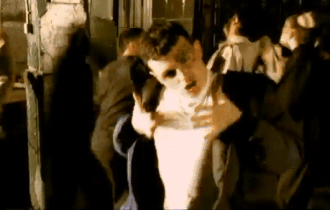
It’s a testament to Bus Stop that despite such a drastic overhaul, the original chorus feels right at home in Kung Fu Fighting. Of course, it’s now punctuated with some exaggerated: “WOO”s and “HAH”s, which unquestionably elevate Carl Douglas’ vocals. Indeed, just try and listen to the original without them to see how anaemic it sounds. Just when you think things couldn’t get any barmier, there’s a new: “Sexy kung fu fighter, let me take you higher” refrain pasted onto the end of the chorus. It’s officially performed by session singer Sue Quin, although in the video it’s credited to May Li (because stereotype), and – needless to say – it’s incredible.
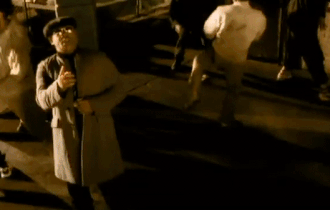
Kung Fu Fighting leaves no stone unturned in its quest to fill the dancefloor. There’s even a crowd involvement section: “One, two, do the Kung Fu (one, two, do the Kung Fu), say three, four on the dance floor (three, four on the dance floor)”. We’ve never had the good fortune to be in a club where this song has been played, so we would be grateful to know whether the breakdown worked. Because judging from live performances of the song, it merely left the crowd utterly perplexed as to what was going on. Which is an entirely fair summation of the song as a whole, in fairness.
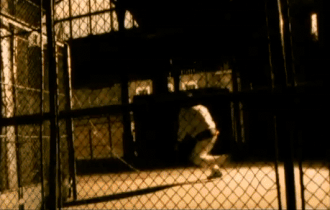
The music video for Kung Fu Fighting is a simple concept, but mercifully avoids leaning too much into the stereotype of the song’s sound. It stars Bus Stop and Carl Douglas in a choreographed dance-battle with a troupe of goons. It runs for the duration of the video, while, May Li spends most of the time wandering around next to a fence enthusiastically mouthing the female vocals. The gritty (well, by ‘90s standards) aesthetic is far from the brash, bright affair one might expect from a song that had potential as something of a novelty. Instead, Kung Fu Fighting’s achievement lies in its choreography, which is terrifically inventive and flawlessly executed. Perhaps the only real downside is that such an effort wouldn’t necessarily have been appreciated for a song that was many things, but never subtle or understated.
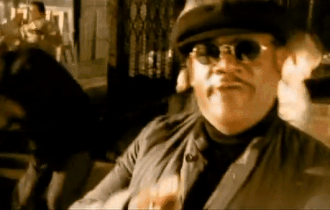
Bus Stop’s unprecedented take on Kung Fu Fighting didn’t quite match the performance of Carl Douglas’ original. But it certainly had an unusual chart run for the late ‘90s; the single entered the chart at #13, before climbing over the following weeks until it reached #8. Then, having finally become a top ten hit, the track went into reverse and promptly dropped back down the chart again. It was a remarkable performance, but this does feel like the sort of song that could have captured the public’s imagination and been much bigger during the Christmas party season. It’s daft, it’s silly, and it’s a lot of fun, but maybe releasing it on the cusp of summer was what stopped that initial burst of momentum turning into something much more significant. Bus Stop scored further hits, but none so successful as Kung Fu Fighting. Indeed, most of their subsequent achievements came separately. Daz Sampson scored several hits as part of Uniting Nations, and represented the United Kingdom at Eurovision in 2006, while Graham Turner and Mark Hall formed Flip & Fill.
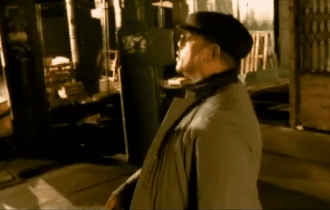
It’s entirely debatable as to whether Kung Fu Fighting could even be considered a cover in the truest sense of the word. But either way, this is unquestionably the definitive version of the song. It’s ludicrous. It defies explanation. It takes every opportunity to raise the stakes and the end result is absolutely, utterly brilliant.



